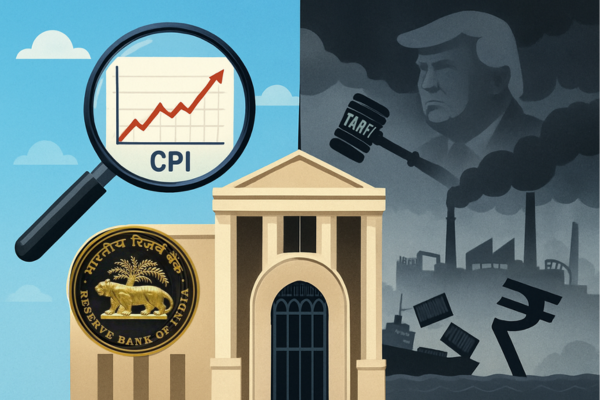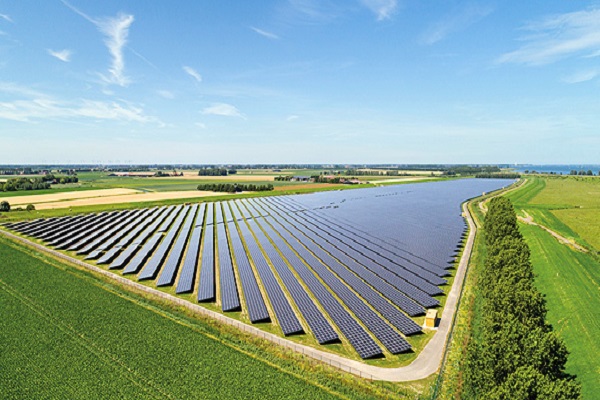.png)

Dr. Srinath Sridharan is a Corporate Advisor & Independent Director on Corporate Boards. He is the author of ‘Family and Dhanda’.
September 30, 2025 at 6:56 PM IST
For over three decades, the dominant story of business was that the world had grown flat. Distance was steadily shrinking in its importance, global markets opened, supply chains stretched seamlessly across continents, and capital flowed where it found opportunity. The march of globalisation appeared irreversible, powered by trade liberalisation, technological progress, and the confidence of firms that geography was losing its grip.
Yet history has an unsparing way of reminding us that assumptions about permanence rarely endure. The pandemic paralysed borders and disrupted supply networks that had been fine-tuned for efficiency but not for shock. Strategic rivalry between the US and China redrew the map of trade and technology. Conflicts in Eastern Europe and the Middle East unsettled flows of energy, commodities, and investment. Earlier too, the Asian financial crisis, the dot-com collapse, and the global financial crisis of 2008 had shown how tremors in one corner of the world could cascade across markets everywhere. Climate shocks have added another layer of fragility, from floods that disrupted factories in Thailand to the Fukushima disaster that reshaped energy and supply chains in Asia. These events did not mark the end of globalisation, but they have altered its rhythm and its rules.
‘Deglobalisation’ has become one of the defining phrases of our time, alongside the vocabulary of risk, resilience, tariffs, weaponised trade, and the disruptive spectre of populist politics. The age of hyper-globalisation that peaked in the early 2000s is fading. But let us not write an obituary yet. What we are witnessing is not the disappearance of global connectedness but a rewiring of it.
This new journey is about redesign. The “end of globalisation” is better understood as a global rewiring, as firms shift from the single-minded pursuit of cost efficiency towards resilience. Systemic risk has forced boardrooms to rethink distance by regionalising or nearshoring operations, rethink risk by embedding transparency and robust management systems, and rethink resilience by building redundancy, forging strategic partnerships, and investing in knowledge assets that outlast disruptions.
For firms, the lesson is not that global integration has vanished, but that it has acquired new fault lines. Distance has re-emerged in subtle but significant ways. Companies now weigh whether suppliers are geographically proximate enough to manage disruption, whether logistics routes are secure, and whether customer markets can be reached reliably in turbulent times. Even a single choke point in a distant port can reverberate across an entire industry.
Risk too has expanded beyond the traditional vocabulary of finance. Geopolitical contestation, cyber-attacks, climate shocks, and regulatory fragmentation can fracture business models built on a thin margin of predictability. Firms that once calculated risk in spreadsheets now confront uncertainties that cannot be priced easily. Managing these risks demands foresight, alliances, and a deeper appreciation of political and cultural dynamics in every market.
Resilience has become the decisive element. For years, efficiency reigned supreme, and supply chains were celebrated for their lean precision. That efficiency is now being reassessed against the ability to absorb shocks and scale. Resilience is about flexibility in sourcing, diversification in markets, agility in adapting strategies, and trust built with governments, communities, and stakeholders who can sustain continuity when contracts or logistics falter.
The semiconductor industry illustrates this shift. For decades, design in the United States, fabrication in East Asia, and assembly elsewhere delivered low costs but fragile choke points. The pandemic and geopolitical strains showed how a disruption in Taiwan or South Korea could stall industries from cars to smartphones. The response has been a global push for “friend-shored” and local capacity, reminding firms that distance has regained its strategic weight.
India’s pharmaceutical industry tells a parallel story. As the “pharmacy of the world”, it relied heavily on Chinese ingredients. When those supplies faltered during the pandemic, firms scrambled for alternatives, prompting policy support for local manufacturing. Resilience here meant fallback options that protected both commerce and public health.
The lessons of recent crises are clear: supply chains cannot afford to be both stretched and brittle. Concentrating sourcing in one geography is an invitation to systemic shocks. Firms are diversifying across regions, using digital technologies for end-to-end visibility, and embedding a resilience-focused mindset into strategy. Systemic risk audits, stress-testing of supply chains, and contingency planning are becoming as central to competitiveness as pricing or innovation once were.
What is unfolding is a transition from globalisation without friction to an era of conditional, regionalised, and politicised flows. Nationalism, industrial policy, protectionism, and rivalry between great powers are reshaping how firms allocate capital and manage supply chains. The shocks of 2008 and the pandemic accelerated a trend already under way, reinforced by climate risks and automation that reduce the rationale for far-flung labour arbitrage. While firms will still keep production abroad where automation cannot replace value, reshoring is accelerating, often with vertical integration to reduce reliance on fragile supplier networks.
It is worth recalling that globalisation was never centrally planned. It was a cumulative phenomenon, the product of individuals, firms, and governments pursuing opportunities that compounded over time. Those who gained became its champions; those who lost were too often ignored. The same cycle may repeat, albeit in different form, with new winners and excluded voices.
Globalisation has not ended; it has become more fragmented and conditional. Firms are entering an era of “selective globalisation”, where openness coexists with barriers, and integration is pursued with caveats. Supply chains may regionalise, investment may follow political alignment, and digital infrastructure may splinter into parallel systems. This fragmentation raises costs but also creates opportunities for those able to bridge divides with ingenuity.
Policy choices will shape how this transformation unfolds. Governments, worried about security and stability, are intervening more assertively in trade and technology. Firms must cultivate the ability to work not just across markets but across regulatory and geopolitical boundaries. Dialogue with policymakers, investment in compliance, and participation in shaping standards are now central to strategy.
There is also a cultural dimension. Globalisation was once celebrated as a tide that lifted aspirations worldwide. Its discontents - inequality, dislocation, cultural unease have fuelled the political currents that constrain openness. Firms that wish to thrive must show that their presence benefits societies, not just shareholders. Building legitimacy across diverse communities may prove as critical as building logistics networks.
Globalisation is unlikely to vanish, but it is becoming more conditional, contested, and uneven. Ian Goldin, in The Butterfly Defect, reminds us that globalisation inevitably creates systemic risks but that halting it does not insulate us. Walls cannot keep out climate change, pandemics, or financial contagion. The higher the walls, the weaker the collective capacity to respond. Protectionism erodes trade, investment, innovation, and employment, undermining precisely the resilience societies seek to build. The challenge is to reimagine globalisation to make it safer, fairer, and sustainable, and capable of managing risks that are inescapably shared.
The future of globalisation is neither flat nor finished. It is textured, uneven, and will have to be renegotiated at every turn. For firms, the imperative is to rethink distance, expand their understanding of risk, and build resilience as a discipline.
Globalisation will endure, but no longer as the effortless tide it once seemed. The question is not whether firms can continue to be global, but whether they can be resilient enough to remain so.




